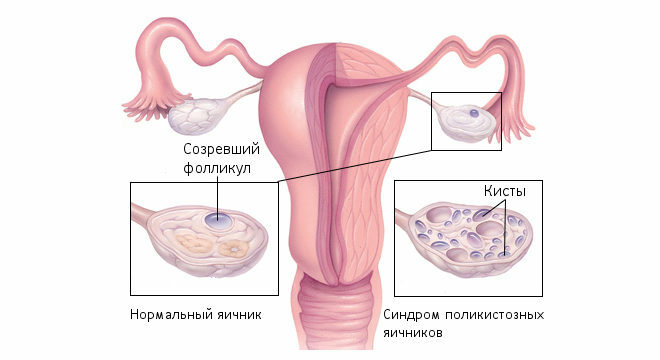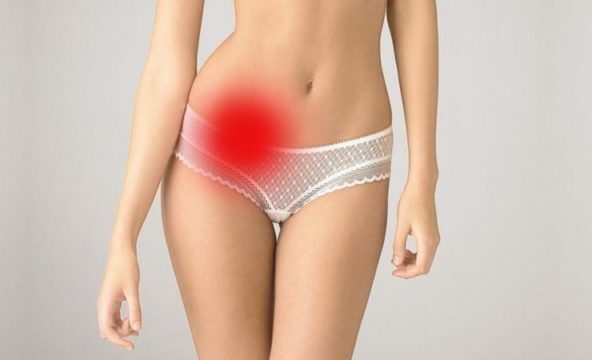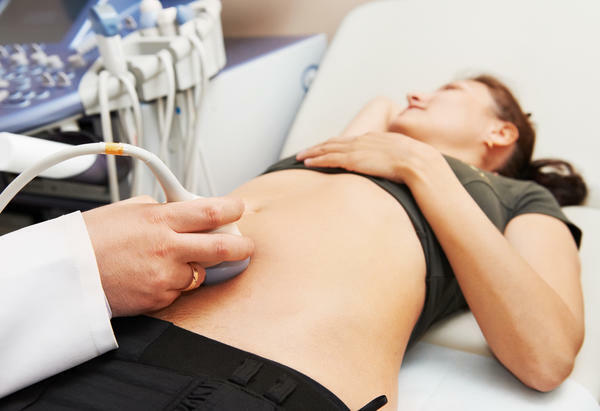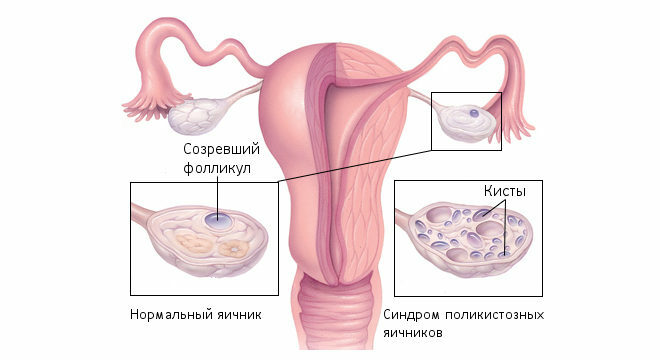Quite often, doctors face women who have cystic ovarian formations. These pathologies can be caused by a variety of causes, differ in structure and flow. The most complex is the dermoid ovarian cyst, which refers to ovarian tumors.
What is it caused by?
What is and what are the causes of dermoid ovarian cyst? This pathology is a tumor that occurs in a benign form and can adversely affect the condition of the female reproductive system.

The dermoid is formed even during the intrauterine development of the baby. When the fetal tissues are formed, their differentiation is disturbed, as a result of which the elements of the embryo tissues remain in the ovary. It is from these that the formation of a dermoid ovarian cyst may occur in the future.
These elements are found in the ovaries of many women, however, their transformation into pathology is not always the case. The causes of neoplasm are still unknown. Scientists suggest that they are associated with a hormonal background. This conclusion was made because most often the disease occurs in women in puberty and during menopause. It is also believed that the causes of the pathology includes a trauma to the stomach.
Symptomatic of neoplasm
The dermoid cyst of the left ovary develops rather slowly, so for a long time a person may not know that it has it. In most cases, women learn about the presence of the disease when they undergo a preventive examination or an ultrasound examination performed for some other reason.
Clinical manifestations begin to disturb patients with the course of the disease. Women feel pain in the lower abdomen. No violations of the hormonal background and menstrual cycle is observed.
The ovarian dermoid cyst is dangerous because it gradually begins to displace the ovary. And when the size of the cyst becomes large, the circulation of blood worsens due to the squeezing of the vessels that feed the female organs. As a result, normal functioning of the ovaries produces a malfunction.
Patients complain that:
- Painful sensations, having a pulling or twisting nature that predominate in the lower abdomen, are being tormented. But a woman can not pinpoint the location of the pain, since it can be observed first from the left, then to the right and so on.
- There is a heaviness in the abdomen.
- There is often a desire to empty the bladder, and urination can also be accompanied by soreness and a burning sensation.
- Normal functioning of the digestive system worsens, which manifests itself in the form of problems with the stool.
- There is an increase in the abdominal cavity due to tumor growth.
Over time, in the process of growth and changes in the location of the lesion, it is possible to twist his legs. This can happen due to heavy physical exertion, but in some situations there may not be a reason for this.
 In the case of torsion legs women feel unpleasant symptoms, which eventually only intensified:
In the case of torsion legs women feel unpleasant symptoms, which eventually only intensified:
- Worried sharp pain in the lower abdomen that lasts for a long time and is able to give to the rectum or in the leg.
- Body temperature rises.
- Feeling of pain when you press on the surface of the abdomen.
It happens that in patients due to various reasons an inflammatory process of the tumor may occur. In this case, the person's body temperature rises sharply to 39 degrees, there is a weakness, loss of efficiency, fever, soreness in the lower abdomen.
Diagnosis of a dermoid tumor
A dermoid ovarian cyst is identified using some diagnostic measures. First, the gynecologist conducts a routine examination, in which it is already possible to conclude that there is a pathology. The doctor sees that the size of the ovary is increased, and its consistence is abnormal.
When a specialist probes a neoplasm, he feels something round and elastic. Moreover, it has mobility, because there is a leg. Most often the dermoid cyst of the right ovary is diagnosed.
It is very important for the doctor to establish correctly what type of tumor is present in a woman in order to be able to prescribe appropriate therapy. Therefore, doctors use ultrasound.
Its results will accurately say the correct diagnosis. During the procedure, the specialist has the opportunity to determine the structure of the walls of the neoplasm, the consistency of the substance located inside it.
In some cases, when it is difficult to make an accurate diagnosis, they resort to magnetic resonance imaging. This method of diagnosis can give much more information about the state of organs, helps in more detail to consider the tumor.
The examination of the patient can not be performed without laboratory tests, therefore they are appointed without fail. The dermoid ovarian cyst is almost always accompanied by inflammation. In this regard, in the blood of women should be deviations from normal indicators.

Blood is also needed to conduct a test for the malignancy of education, since the cyst can develop into cancer. This moment is very important, because it is possible to prevent the development of a dangerous tumor.
How is the pathology treated?
Treatment of dermoid ovarian cyst is mainly performed by surgery. Thanks to the operation, it is possible to eliminate the disease, which brings a lot of unpleasant symptoms to patients and is capable of passing into a malignant form.
There are situations when this method is not produced or postponed for a while:
- If the dermoid cyst of the right ovary is diagnosed in a child, but it does not affect his health, has a small size, the operation is not performed, but conservative therapy is used under strict doctor supervisionbeyond the course of the disease.
- If a woman is in an interesting position, and the education is small, then the surgical method is not resorted to. But the tumor should not press on the internal organs and interfere with the fetus. The condition of the pregnant woman and the course of the illness must be controlled by a doctor. It is worth noting that if a woman was cut out of a cyst, this does not affect the conception.
- If concomitant diseases of the genital system are found. The operation is not carried out until the infectious and inflammatory diseases are completely eliminated.
Drug treatment very rarely gives a positive result, but nevertheless doctors sometimes try to first carry out therapy with the help of hormonal means. But these drugs can only slow down the process of tumor growth, but they can not destroy it.
There are two types of surgery that are performed to treat cysts. These include:
- laparotomy;
- laparoscopy.
Laparotomy is the simplest surgical technique in which the removal of the formation is performed. With her, the doctor cuts the abdominal wall. Laparoscopy is the newest and most expensive way of surgical intervention. In the course of it, not one large incision is made, but several small ones, through which special medical instruments are inserted into the abdominal cavity of the patient.
Advantage is given to laparoscopy, because it is different in that the patient's body is restored in a short time, the body remains much less traces. However, this method requires highly qualified specialists who are able to use the appropriate equipment.
When performing surgical treatment, doctors set a task to remove the cyst, but so that it does not affect the patient's body or with the least loss. For patients who are still in child-bearing age, it is necessary to try to preserve as much as possible the sex gland tissue. Women who have menopause, you can eliminate the tumor with the ovary. This is usually done if the disease is started.
Thus, the dermoid ovarian cyst is a neoplasm that has a benign course and is accompanied by unpleasant symptoms. The prognosis for recovery will be favorable if the disease is diagnosed in a timely manner. Therefore, it is very important for every woman to undergo preventive examinations with a gynecologist, no matter how unpleasant the procedure is.



